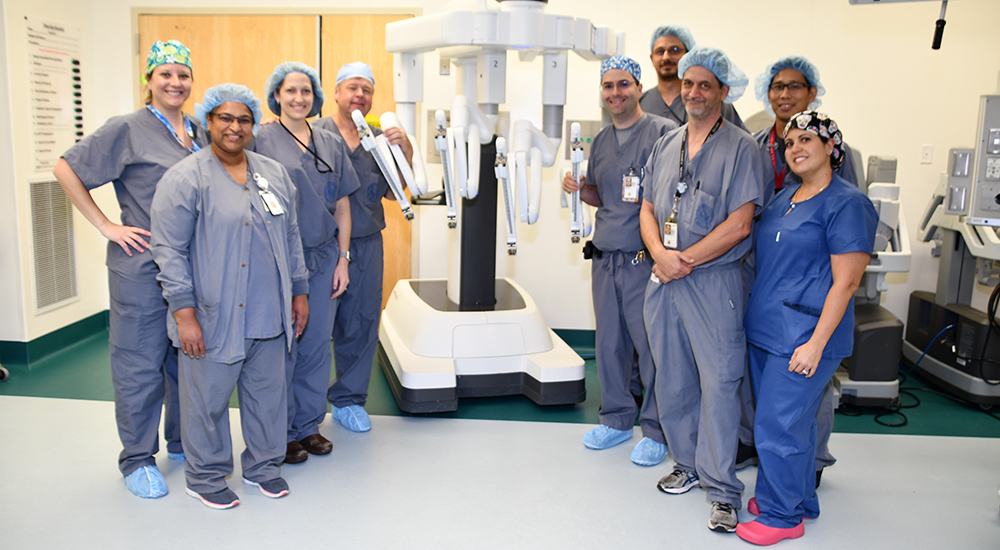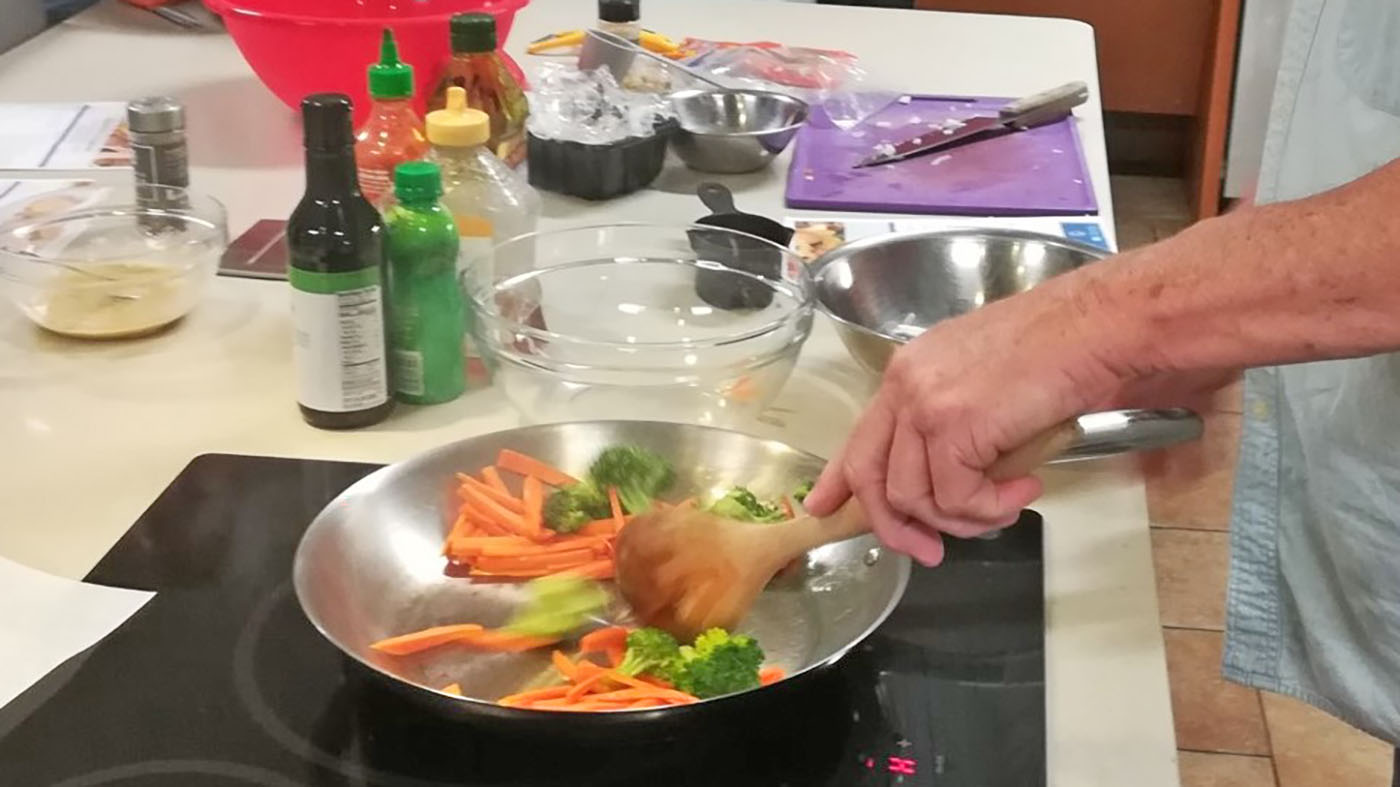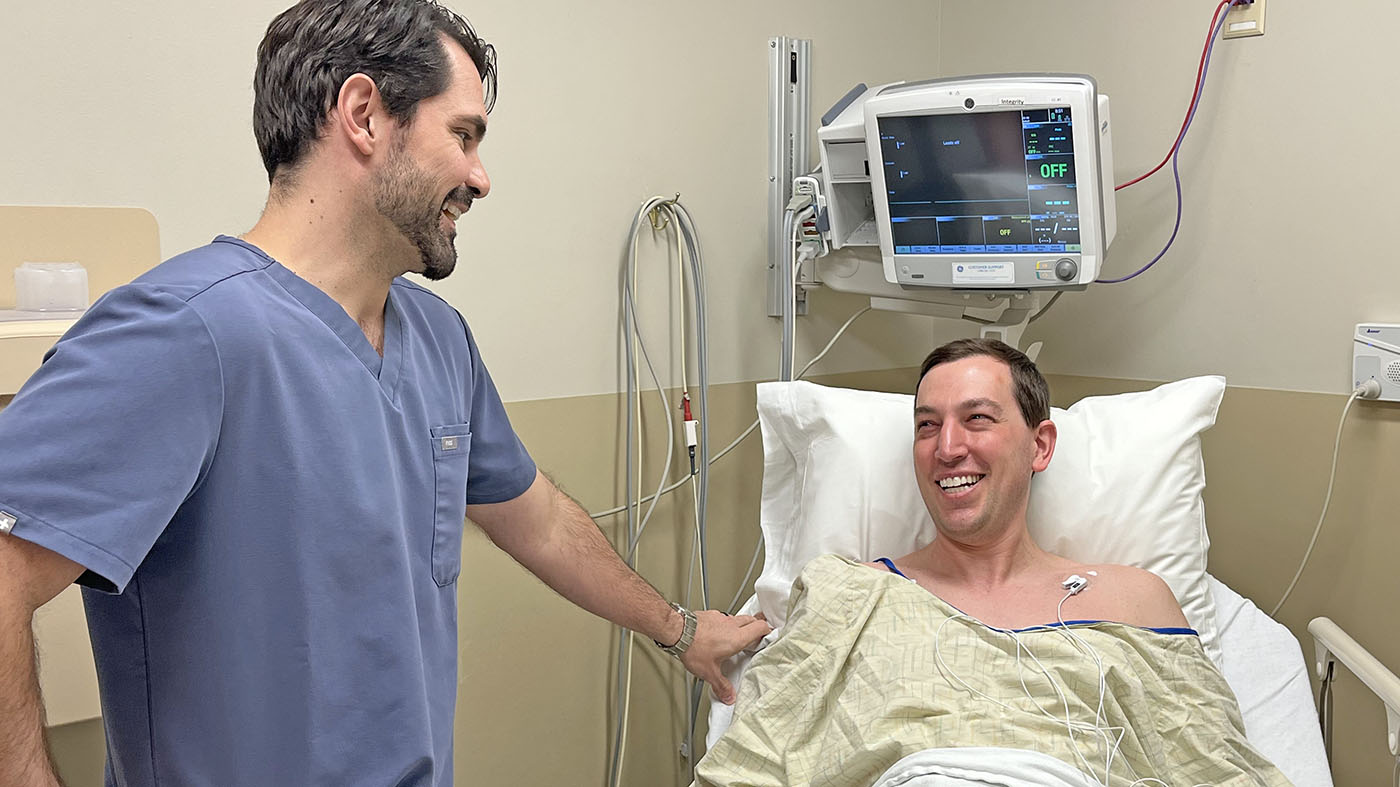While robotic surgery may sound like something out of a science fiction story, it’s actually something being done today – a lot – at James A. Haley Veterans’ Hospital. (JAHVA).
Surgeons here recently completed their 1,000th robot-assisted surgery using the da Vinci surgical system. That’s more than any other hospital in the Veterans Health Administration.
JAHVH received their first da Vinci system in February 2017. Staff used it so much that the hospital acquired a second system in September 2018. Each system conducts one to three surgical procedures daily.
The da Vinci system uses a four-armed bedside cart operated through a remote console by the surgeon to perform minimally invasive surgical procedures. Each arm controls surgical instruments inserted into the patient through small incisions, much like standard laparoscopic surgery.
“The da Vinci is a laparoscopic surgery, but you connect to the robot to manipulate the instruments,” said Dr. Chris Murphy, senior general surgeon. “Instead of a regular laparoscope, where you have two-dimensional rotation of the instruments, the da Vinci can move in eight directions. Your ability to do things with the robot is greatly enhanced.”
The robot’s imaging system also gives the surgeon a three-dimensional view of the operating field. A standard laparoscope provides a two-dimensional view.
“Makes what I do a lot easier”
“I’m a colorectal surgeon and a lot of what I do is work in the pelvis with rectal cancers and inflammatory bowel disease,” said Dr. Lisa Moudgill, chief of general surgery. “The visualization is much better with the robot. The 3-D images and the improved range of motion with the instruments make what I do – working in a very confined space – a lot easier.”
Smaller incisions improve patient post-operative pain and healing. The accuracy of the movements associated with the robotic surgery procedures also contribute to that.
“If your dissection is way more accurate, way more elegant with the robot than it is without the robot, the forces you apply to the skin during the operation are remarkably less with the robot versus doing it laparoscopically,” Murphy said. “All that translates to decreased pain in the patient.”
A sign of the decreased pain levels with the robotic surgery is that patients are using less pain medication.
“Back in the days when we did just laparoscopic surgery, they would get the initial prescription and then a fair number would call for a refill,” said physician assistant Christopher Schneider. “Now they’re getting smaller prescriptions and not even calling for a refill. They’re returning to work quicker. They’re up and moving.”
Used for wide variety of procedures
The system lets surgeons use up to 30 different instruments with four being in use at any given time. That flexibility makes the system ideal for a wide variety of procedures. Moudgill and Murphy use the system for colorectal and hernia repair surgeries. They also use it for ear, nose and throat surgeries, kidney and lung surgeries and gynecological procedures, among others.
Surgical nurse coordinator Nicey Ooroth said robotic surgery is in great demand. Word is out among Veterans that the robotic surgery is better than regular surgery. Patients are asking specifically for it. JAHVH surgeons continue to learn about robotic surgery so they can provide more options for care.
“We have a good group of surgeons who have a real interest in doing and learning robotics,” Moudgill said. “We want to be competitive with what’s happening out in the private sector and to offer the same standard of care to the patients. I think overall, VA is quite supportive of ensuring we have time to use the robot almost whenever we want.
“We also have great nursing and tech support who jumped on board and are making the program run and making it successful.”
Topics in this story
More Stories
VA promotes early nutrition intervention for chronic kidney disease with targeted programs like Heathier Kidneys Through Your Kitchen.
VA Research Advisory Committee on Gulf War Veterans’ Illnesses hosting Veteran Engagement Sessions in Phoenix for 1990-91 Gulf War Veterans.
Navy Veteran and president of the American Medical Association got a colonoscopy and encourages other Veterans to do the same.







